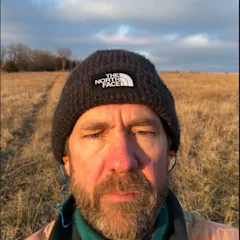Even the stealthiest wild animals leave evidence of their passage through the woods and fields, and one of the most telltale calling cards is the humble turd. Call it scat, droppings, sign, or just plain old poop, animal feces
can be a dead giveaway that a particular species is active nearby. Raccoons are no different. In fact, due to their somewhat singular approach to waste management, raccoons are among the easiest animals to identify by the droppings they leave behind. But what does raccoon poop look like?
What does raccoon poop look like?
So how do you go about determining if the scat you’re seeing is from a raccoon? By process of elimination, of course.
Location, location, location
Most critters let fly wherever they feel like it (that’s one of the perks of being a wild animal, after all), but some take a more strategic approach to defecation. Coyotes, for example, often drop feces in high-profile spots like trail junctures to communicate to members of their pack and warn off intruders from other packs. Raccoons are unique in concentrating their caca in one area, creating communal “latrine” sites they return to again and again when nature calls. Finding a concentration of old and new scat on a downed log or in a tree fork is a sure sign that one or more raccoons are denning nearby. Finding one in your yard or attic will likely require a call to a pest removal professional.
Shape: What does raccoon poop look like?
Raccoon poop is usually tube shaped (which sets it apart from the pellet-shaped droppings of ungulates like deer, elk, and moose) and often segmented or broken into multiple sections with blunt ends (which sets it apart from the tubular, tapered turds left by foxes and coyotes). Raccoon leavings can have a granular appearance, like molded sand (which distinguishes it from possum and skunk scat). They can also resemble dog doo, but since a raccoon’s diet is much more varied than your hunting dog’s, you’ll likely be able to tell the difference based on the next two characteristics.
Color and content: What does raccoon poop look like?
are highly adaptive omnivores that will eat just about anything they can get their paws on. And, no, raccoons don’t “wash” their food before they eat it, a myth so longstanding it’s even incorporated into their scientific name, Procyon lotor. Lotor is Latin for “the washerman.” Wildlife biologists believe that raccoons wet their forepaws to increase the sensitivity of nerves that help them gather more sensory information about their meal, and they exhibit this behavior even when there is no water around.
As a result of their highly varied diet, the color of raccoon feces can vary from black to red. Berries are a highly favored food source, when in season, and raccoons also scavenge dead animals, so their droppings often reveal large amounts of undigested matter like seeds and fur. Anyone who has ever set up a trail camera over a corn pile to survey the bucks on a hunting property knows that raccoons also compete for the same ag crops as deer—sometimes with hilarious results
.
Scent
Raccoon scat can exhibit a strong musky odor, but if you can smell this, as you will read in the next section, you may be too close.
Health Hazards
Raccoons carry a number of parasites that are transmissible to humans and domestic pets. Among the most dangerous is the roundworm, which has eggs so tiny they can become aerosolized and are easily picked up by handling or even inhaling infested droppings. These eggs can also remain viable for years in contaminated soil. Leptospirosis, a blood infection caused by bacteria that can lead to bleeding in the whites of the eye and jaundice, is another common raccoon disease. If you encounter a latrine site while out hunting, it’s probably best to not examine it too closely. If you find one in or near your home and are determined to DIY the cleanup project rather than call in an expert, the Centers for Disease Control and Prevention has extensive instructions
on how to do so safely. Determine first if it looks like raccoon poop, then make safety your top priority.
Raccoons also carry rabies. According to a 2018 survey, they were the second most frequently reported rabid wildlife species in the United States, accounting for about 30 percent of all animal cases, which was second only to bats. Last year the U.S. Department of Agriculture used helicopters and airplanes to drop nearly 4 million bait packs
dosed with an oral rabies vaccine designed to inoculate raccoons in several eastern and southern states.
Fun Fact
While raccoons are native to North America, they are found in some surprising places around the globe. They were introduced to the Caribbean islands as early as 1650 and have proliferated across much of Europe since they were brought to Germany in the 1930s for the fur trade. Raccoons were introduced to Japan in the 1960s and have been reported in Iran since 1991.






